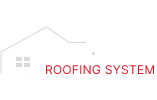Whether you're installing a new roof or repairing an existing one, avoiding common mistakes is crucial for ensuring durability, performance, and value for your investment. In this article, we highlight five frequent roofing errors and provide expert advice on how to prevent them.
Mistake #1: Improper Nail Placement and Quantity
Nails are the primary fasteners holding your roof in place, and incorrect nail usage is one of the most common installation errors we see.
The Problem:
- Incorrect Placement: Nails placed too high on shingles miss the reinforced nailing strip
- Overdriven Nails: Nails driven too deep damage shingles and reduce holding power
- Underdriven Nails: Nails not flush with the shingle surface can puncture overlying shingles
- Insufficient Quantity: Too few nails per shingle reduce wind resistance
The Solution:
- Follow manufacturer specifications for nail placement, typically along the nailing strip
- Use the correct number of nails per shingle (typically 4-6 depending on wind zone)
- Ensure nails are driven flush with the shingle surface, not overdriven or underdriven
- Use proper length nails that penetrate through the roof deck by at least 3/4 inch
Proper nailing alone can significantly extend your roof's lifespan and improve its resistance to high winds.
Mistake #2: Inadequate Roof Ventilation
Roof ventilation is often overlooked but plays a critical role in roof performance and longevity.
The Problem:
- Excessive heat buildup in the attic accelerates shingle aging
- Trapped moisture leads to deck rot, mold growth, and insulation damage
- Ice dams form in winter due to uneven roof temperatures
- Energy efficiency decreases as HVAC systems work harder
The Solution:
- Install a balanced ventilation system with both intake (soffit) and exhaust (ridge or other upper roof) vents
- Follow the 1:300 rule: 1 square foot of ventilation for every 300 square feet of attic space
- Ensure soffit vents aren't blocked by insulation using baffles
- Consider a professional ventilation assessment to determine optimal solutions for your specific roof
Proper ventilation not only extends roof life but can also reduce energy costs and prevent moisture-related problems throughout your home.
Mistake #3: Improper Flashing Installation
Flashing creates a water-resistant barrier at roof transitions and penetrations, making it critical for preventing leaks.
The Problem:
- Reusing old, damaged flashing during re-roofing
- Improper sealing around chimneys, vents, and skylights
- Incorrect flashing installation in valleys where water concentrates
- Using incompatible materials that accelerate corrosion
- Relying on caulk or roofing cement as a primary waterproofing method rather than proper flashing
The Solution:
- Install new, high-quality flashing during roof replacement
- Use step flashing at wall intersections, not continuous flashing
- Ensure proper overlap and integration with underlayment
- Follow manufacturer specifications for different roof penetrations
- Use compatible metals to prevent galvanic corrosion
According to industry studies, improper flashing is responsible for over 60% of roof leaks, making this a critical area to get right.
Mistake #4: Layering New Shingles Over Old
While building codes often allow for up to two layers of roofing, installing new shingles over existing ones can create significant problems.
The Problem:
- Underlying issues like rot or damaged decking remain hidden and unaddressed
- Additional weight stresses the roof structure
- Uneven surface leads to premature shingle failure
- Heat buildup between layers accelerates shingle deterioration
- Future repairs become more complicated and expensive
The Solution:
- Complete tear-off of existing roofing materials before installation
- Thorough inspection and repair of the roof deck
- Installation of new underlayment and ice and water shield where required
- Proper preparation of a clean, smooth surface for new roofing materials
While a complete tear-off increases initial costs, it typically provides better long-term value and performance.
Mistake #5: Improper Underlayment Installation
Underlayment serves as a secondary water barrier beneath your roofing material, providing crucial protection against leaks.
The Problem:
- Using low-quality or inappropriate underlayment for the climate
- Insufficient overlap between underlayment sheets
- Improper sequencing with flashing and other components
- Inadequate ice and water shield in vulnerable areas
- Underlayment left exposed to elements too long before roofing installation
The Solution:
- Use synthetic underlayment for improved durability and tear resistance
- Install ice and water shield in valleys, eaves, and around penetrations
- Ensure proper overlaps (typically 4 inches on horizontal seams, 6 inches on vertical)
- Follow correct installation sequence with drip edge and flashing
- Minimize exposure time before installing final roofing material
Quality underlayment properly installed provides essential protection against wind-driven rain and, particularly in severe weather events.
Bonus Mistake: Hiring Unqualified Contractors
Perhaps the most significant mistake homeowners make is hiring roofing contractors based solely on price without verifying qualifications.
The Problem:
- Uninsured contractors leave you liable for accidents
- Lack of proper licensing means no regulatory oversight
- Limited knowledge of building codes and manufacturer requirements
- Poor workmanship that voids material warranties
- Fly-by-night operations that won't be available for warranty service
The Solution:
- Verify proper licensing and insurance
- Check manufacturer certifications (like GAF Master Elite or Owens Corning Preferred Contractor)
- Review detailed references and past project photos
- Obtain comprehensive written estimates and contracts
- Confirm warranty terms for both materials and workmanship
A quality contractor may not offer the lowest bid, but the long-term value and peace of mind are well worth the investment.
Conclusion
Avoiding these common roofing mistakes can save you thousands in premature repairs and replacement costs. Your roof is too important to cut corners or accept substandard installation practices.
At Multi-Bee 360 Roofing System, our certified professionals follow industry best practices and manufacturer specifications to ensure your roof performs optimally for its entire expected lifespan. Contact us today for a consultation or inspection to ensure your roofing project avoids these costly mistakes.
